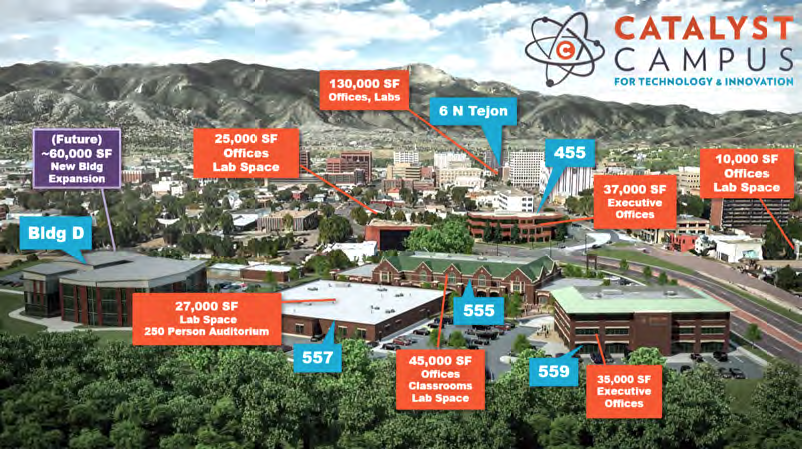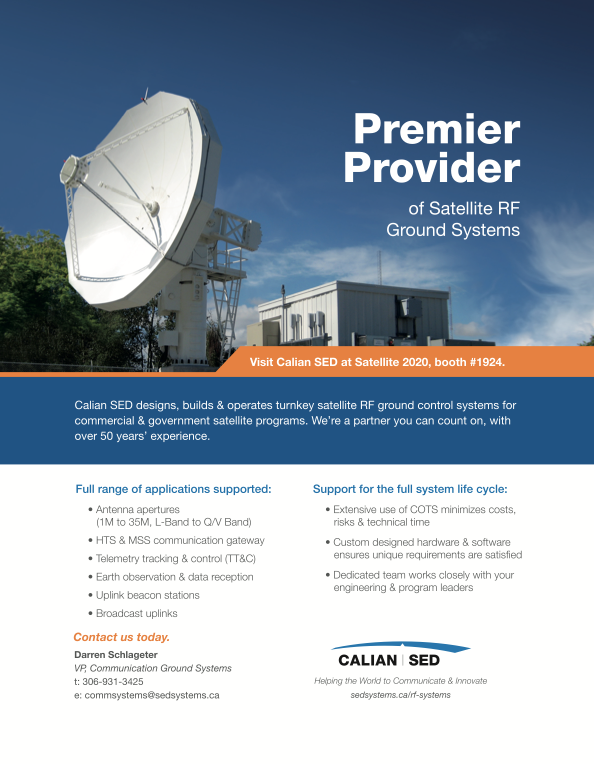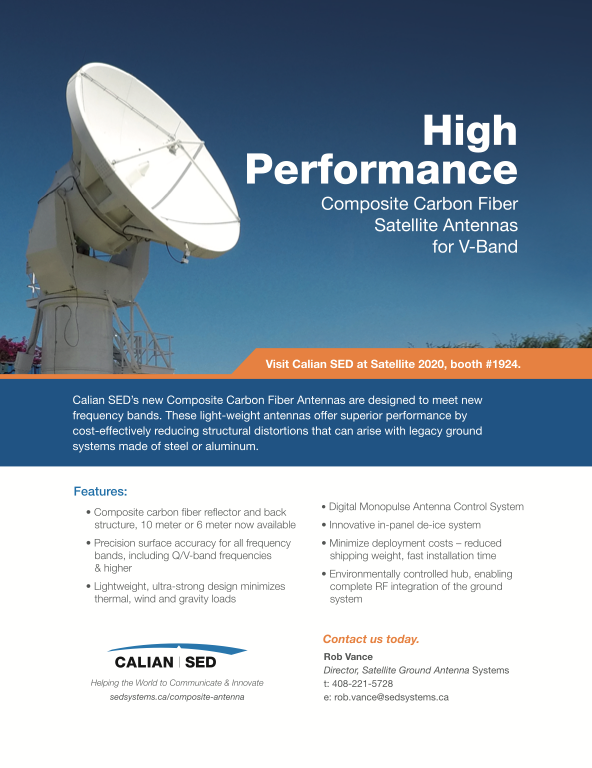Historically, ground control operations evoke images of a bustling, fully manned room filled to the brim with expensive hardware. Every command would require the full attention of operators and an entire fleet of IT professionals to ensure each piece of hardware continued to run optimally. While these images will likely always be the way Hollywood perceives ground operations, the landscape of satellite ground control is on the threshold of revolution.
The implementation of cloud applications is one of the latest technical trends in the industry. The rapidly expanding commercial space market has bogged down existing government and commercial ground assets, resulting in both financial, time, and availability constraints within all areas of mission control.


The Space Foundation issued a 2019 Space Report listing 114 successful launches in 2018 from 40 active spaceports around the world. Each of these launches has the potential to carry dozens of spacecraft. The report suggests that there are another 10 international spaceports in development and 13 proposed, which results in a 58 percent increase of future launch potential. Modernization of legacy spacecraft ground control and mission data processing infrastructure is mandatory to adequately increase capacity for the control and data processing produced by new space systems.
Cloud environments enable immediate scalability for rapidly growing programs and industries, allowing flexibility and operational agility while ensuring continued support for rapidly multiplying needs. This advanced performance comes with price-points that also fit within the SmallSat market.
Integrating existing Satellite Operations Center (SOC) capabilities into cloud environments provides comprehensive benefits to all commercial and government satellite customers. The subscription-based models cut out high hardware capital investments and their associated sustainment costs.
With large upfront capital hardware investments nearly eliminated, cloud-based ground control solutions adequately fit inside notoriously limited SmallSat budgets. Cost savings also include the implementation and maintenance costs typically associated with hardware and software purchases. These savings result in predictable budgeting since it is billed as a service, taking the stress out of hardware ownership—no need to worry about additional funds that may be needed due to unexpected hardware failures.
Many companies, such as Braxton Technologies, headquartered on the Catalyst Campus in Colorado Springs, Colorado, also offer hybrid cloud environments where a customer can choose to scale the amount of on-premise hardware versus cloud deployments to balance their budget and mission capabilities.
Most modern programs have moved to IP-based communications, removing serial communication protocols. These enhanced programs function in a cloud environment and relieve legacy commercial and government serial communication systems that are overloaded and running at max capacity. When resources are deployed in a cloud environment, they increase availability and decrease wait times for customers, multiplying
efficiency in the process.
Braxton enables increased capacity for satellite operations by offering customers a commercial antenna service that operates in a cloud environment, using globally distributed commercial antennas to communicate with spacecraft. The ability to access antenna time through a service allows customers to pay by the minute versus the burden of financing and maintaining their own antennas.
While stove-piped systems required programs to build entire infrastructures for each mission, customers can now leverage ground control providers who take advantage of standardized architectures that are enabled by cloud applications.
Cloud environments level the playing field for start-up space ventures by removing the large capital barrier previously required for on-premise solutions, allowing them to focus on disruptive cloud applications to enter the market, remaining lean and agile.
Automation is a critical aspect of successful cloud environments for ground control. With the help of software, such as Braxton’s Intelligent Resource Optimizer, fully automated event-based scheduling operations, human-machine collaboration, mission planning, what-if analysis, and continuous deconfliction capabilities are enabled. Automation increases system resiliency and capacity, supporting lights-out 24/7 operations that may have not been financially feasible before cloud capabilities were introduced.
Perhaps the most valuable aspects of cloud-based applications are the resiliency and redundancy they offer over traditional structures. Legacy operations require a minimum of two sets of hardware to serve as on-line backups in an instance of failure. In a cloud environment, redundancy is built in and allows operators to simply bring up another instance if a component were to fail. This ensures continuous availability of systems and prevents the need for multiple sets of expensive hardware components. Redundancy benefits also include automatic data backups for mission critical information, the revenue-generating function of most space systems, allowing a level of safety and security for an order of magnitude less cost than legacy resources.

Test and validation are often overlooked in the SmallSat world due to limited budgets but are becoming commonplace as cloud capabilities offer simulated environments that provide unlimited resources for test and validation. Braxton leverages cloud applications to provide multiple solutions for test and validation. These solutions range from a Factory Compatibility Tester that is able to test and validate the RF interface to spacecraft before they are launched, to a Common Simulation Environment which simulates the ground control system, antennas, and spacecraft, allowing test, checkout, and rehearsal of all mission applications, procedures, and staff operations prior to launch. Braxton’s cloud environments for testing and validation provide ecosystems to prototype and validate technology while allowing operators and engineers to experiment with new technologies in a realistic environment without risking operational assets.
To maintain pace with the explosive growth of the global space industry, it is wise to transition existing systems toward cloud architectures and take advantage of cloud-hosted applications that increase capacities while reducing costs and enhancing efficiencies. The benefits of using cloud applications are exponential, improving competitive edge and redundancy while nearly eliminating significant financial, availability, and time constraints. Braxton fully supports the new age of space ground technology and has additional cloud-hosted applications becoming available every month, which can support a wide variety of customers and missions.
With more than 25 years of industry experience, Braxton is a trusted small business solution for your space control needs. The company drives innovation by challenging tradition: delivering high-quality solutions on time, on budget, and at orders of magnitude less cost than prior generations. The firm’s services and products support all elements of spacecraft operations while bringing expertise in systems engineering, cross domain data dissemination, information assurance, cybersecurity, and other relevant competencies.
Braxton is proud of our reputation among customers and industry partners, earned by delivering tailored solutions to match each customer’s needs and budgets. Braxton Technologies, LLC is a member company of Braxton Science & Technology Group (BSTG). BSTG combines companies with expertise and products for Command & Control, Satellite Ground Systems, Software Development, Systems Engineering, Cross Domain Data Dissemination, Cybersecurity, Integration, Test & Checkout, and Satellite Operations.

Visit Braxton at booth #2331 during Satellite 2020 or Booth #104 at the 36th Space Symposium to learn more about our products and services and how Braxton can help ensure your mission success.
Crystalyn Koch is the Marketing Specialist at Braxton Technologies, LLC, headquartered in Colorado Springs, Colorado. She specializes in leveraging her marketing skills with knowledge of Braxton capabilities to develop relevant material and direct technical solutions to meet challenges faced by the satellite ground system market. Crystalyn holds a B.S. in Business Administration and Management from Florida Institute of Technology.



